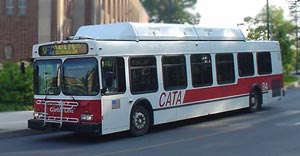What was the first thing you noticed when you came to Penn State? Was it Beaver Stadium towering over the rest of campus? Or did you go straight to the fabled creamery to sample some ice cream?
Oddly enough, the first thing that caught my eye when I visited Penn State for the first time on a beautiful spring day in 11th grade was a large white and red bus:

But it wasn’t even the bus itself that grabbed my attention–it was the words on the roof: “powered 100% by clean natural gas.” I had never seen anything like that near my hometown in the suburbs of Philadelphia, where most of the SEPTA buses used diesel fuel–most blatantly observable whenever you’re stuck behind one at a traffic light. So I decided to do some research on CATA’s CNG-conversion program and its advantages and disadvantages.
CNG stands for compressed natural gas–it’s the same natural gas that’s used to heat homes and power gas grills, but compressed to about 1% of its original volume and stored at very high pressure. Notably, the equivalent amount of CNG as one gallon of gasoline (5.66 lbs) occupies almost 4 times as much space as a gallon of liquid fuel, even under high pressure. That’s the reason for the large boxes on the roofs of CATA buses–that’s where the CNG is stored.
Natural gas burns cleaner than diesel fuel, releasing less carbon dioxide and nitrogen oxides per mile. Yet there is a good reason why the 100% comes before the “by” in CATA’s advertising–natural gas is in no way 100% clean, but it is a whole lot better than diesel. CATA finished converting its entire fleet to CNG in 2005 becoming the first transit system on the East Coast to make a full switch to alternative fuel. CATA also made a commitment to locally-produced natural gas. This in itself has a great environment impact; instead of purchasing fuel that is derived from crude oil that has to be shipped from across the globe to the United States (and then undergo further refining and shipping to its final destination), CATA sources its natural gas from central Pennsylvania and compresses it at its own facility. And perhaps the most driving advantage of the switch to natural gas: it costs less than diesel. For a large transit authority like CATA, the savings in fuel costs far overshadow the cost to retrofit its buses to run on CNG.
Overall, with all the miles CATA logs per year transporting Penn State students and other Centre Area residents, the switch to CNG was an economical decision. But as is rarely the case, the economical decision coincided with an environmentally-friendly decision. Hats off to CATA.
Sources: www.catabus.com, http://en.wikipedia.org/wiki/Compressed_natural_gas

Recent Comments